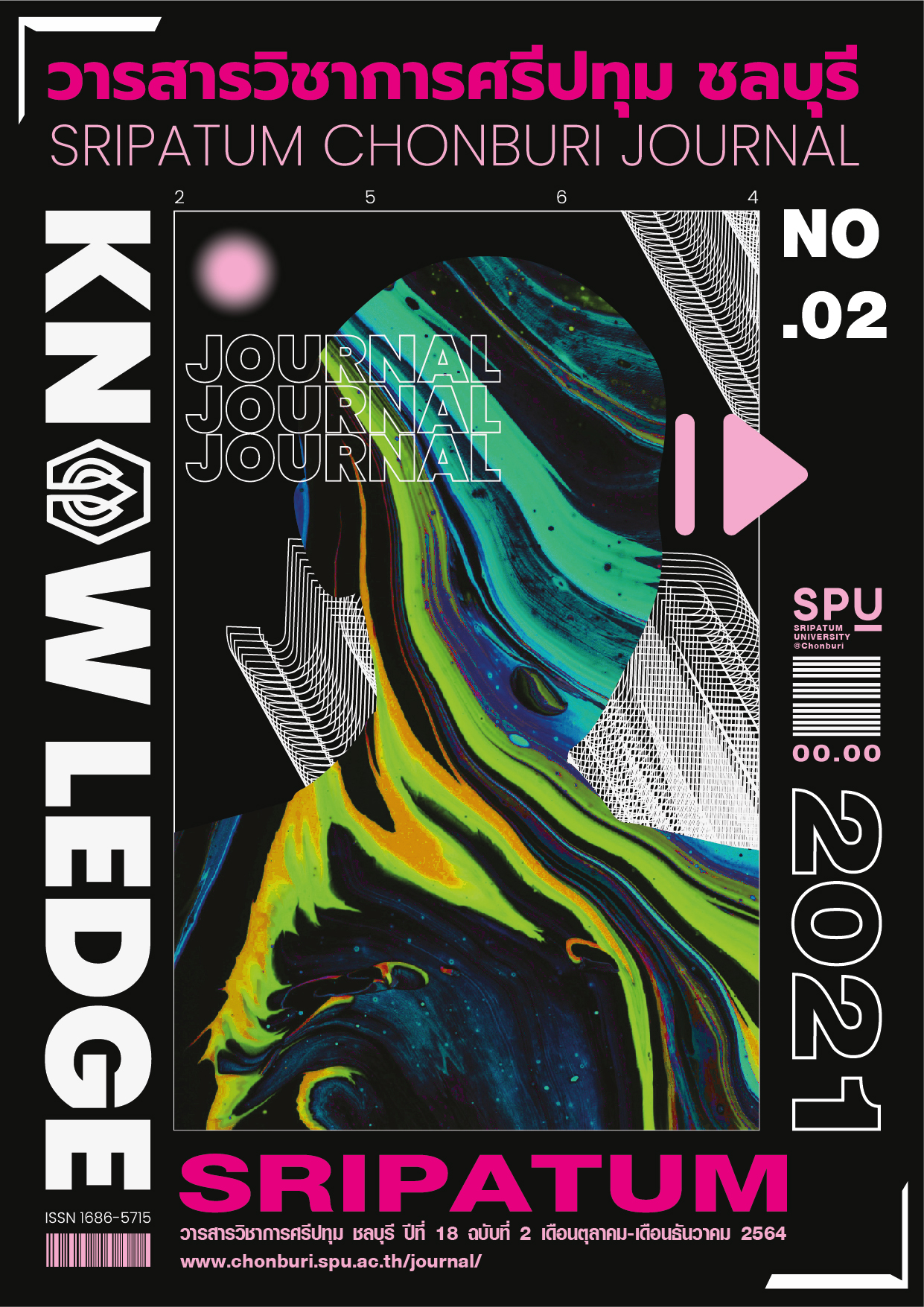THE EFFECT OF USING ONLINE LEARNING ACTIVITIES WITH GOOGLE CLASSROOM ON USING KANJI SCRIPT IN DAILY LIFE IN JAPANESE SUBJECT FOR GRADE 10th STUDENTS
Keywords:
online learning activities, Google classroom, everyday Kanji charactersAbstract
The objectives of this research were to study the results of using online learning activities on Google Classroom on Everyday Kanji Characters in Japanese subject for 10th grade students and to study the students’ satisfaction on the results of using online learning activities on Everyday Kanji Characters. The sample group used in this research consisted of 28 10th grade students from Section 4/1 at Piboonbumpen Demonstration School, Burapha University. The instruments used in this research were online learning activities on Google Classroom, achievement test, and student satisfaction measurement. The statistics used for testing were percentage, mean, standard deviation, and t-test. The results showed that the learning achievement after using the online learning activity plan on Google Classroom on Everyday Kanji Characters for 10th grade students significantly higher at .05 level, and the overall student satisfaction toward the online learning activity plan on Google Classroom on Everyday Kanji Characters for 10th grade students was overall at the highest level.
References
ทัศนีย์ เมธาพิสิฐ. (2547). ปัญหาการเรียนภาษาญี่ปุ่นของนักศึกษาไทย. วารสารญี่ปุ่นศึกษา, 21(2), 53-70.
บุญชม ศรีสะอาด. (2554). การวิจัยเบื้องต้น (พิมพ์ครั้งที่ 9). กรุงเทพฯ: สุวีริยาสาส์น.
ปาจรีย์ วิวัฒนปฐพี. (2560). การศึกษาการใช้แผนผังเชื่อมโยงคันจิในการเรียนการสอนคันจิ สำหรับผู้เรียนชาวไทยในระดับกลางตอนต้น. วารสารเครือข่ายญี่ปุ่นศึกษา, 7(1),
หน้า 51-65.
พวงรัตน์ ทวีรัตน์. (2530). การสร้างและพัฒนาแบบทดสอบ. กรุงเทพฯ: สํานักทดสอบทางการศึกษาและจิตวิทยา มหาวิทยาลัยศรีนครินทรวิโรฒ ประสานมิตร.
พวงรัตน์ ทวีรัตน์. (2543). วิธีการวิจัยทางพฤติกรรมศาสตร์และสังคมศาสตร์ (พิมพ์ครั้งที่ 8). กรุงเทพฯ: สํานักทดสอบทางการศึกษาและจิตวิทยา มหาวิทยาลัยศรีนครินทรวิโรฒ
ประสานมิตร.
ไพฑูรย์ สินลารัตน์. (2557). ทักษะแห่งศตวรรษที่ 21: ต้องก้าวให้พ้นกับดักของตะวันตก. กรุงเทพฯ: วิทยาลัยครุศาสตร์ มหาวิทยาลัยธุรกิจบัณฑิตย์.
ฟาฏินา วงศ์เลขา. (2556). การเรียนรู้ผ่านระบบออนไลน์ การเรียนการสอนรูปแบบใหม่ในยุคไอที (ออนไลน์). เข้าถึงได้จาก:
http://influezmeez.blogspot.com/2013/02/blog-post_5034.html [2561, 19 สิงหาคม].
วัชราภรณ์ เพ็งสุข. (2560). การพัฒนาบทเรียนออนไลน์ วิชาคอมพิวเตอร์สำหรับนักเรียนชั้นประถมศึกษาปีที่ 4 โรงเรียนอนุบาลสุพรรณบุรี. วารสารศึกษาศาสตร์ปริทัศน์, 32(1),
หน้า 7-13.
สำนักเทคโนโลยีเพื่อการเรียนการสอน สำนักงานคณะกรรมการการศึกษาขั้นพื้นฐาน. (2553). การพัฒนาศึกษานิเทศก์ ICT เพื่อการเรียนการสอน. กรุงเทพฯ: โรงพิมพ์ชุมนุม
สหกรณ์การเกษตรแห่งประเทศไทย.
สุทธิณี ภาพพิมพ์ใจ, สิริยุพิน ศุภ์ธนัชภัคชนา และปริญญา ทองสอน. (2561). การพัฒนาผลสัมฤทธิ์ทางการเรียนโดยใช้สื่อมัลติมีเดีย เรื่องเทคโนโลยีน่ารู้ สำหรับนักเรียน
ชั้นประถมศึกษาปีที่ 3. วารสารวิชาการมหาวิทยาลัยราชภัฏบุรีรัมย์, 10(1), หน้า 149-165.
Downloads
Published
Issue
Section
License
บทความทุกบทความเป็นลิขสิทธิ์ของวารสารวิชาการศรีปทุม ชลบุรี



